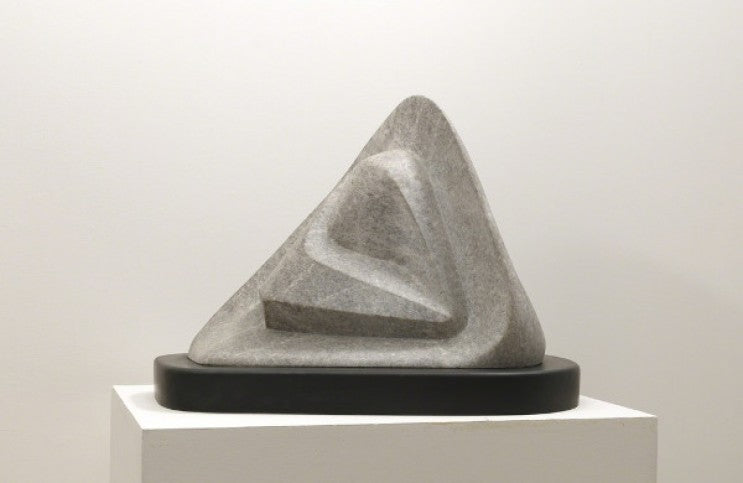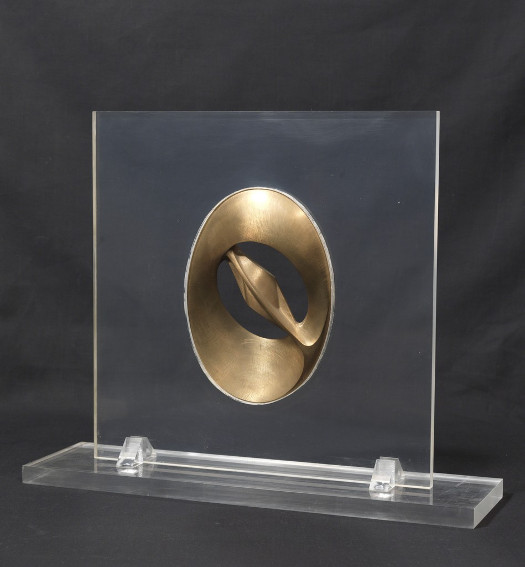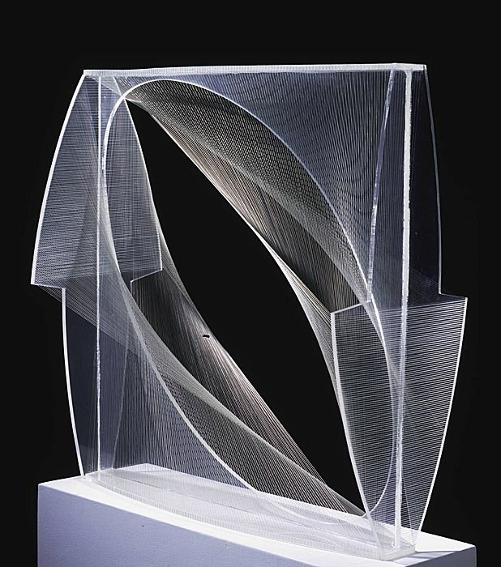
Why Naum Gabo Was Instrumental for 20th Century Sculpture
Naum Gabo was one of the quintessential “important artists” of the 20th Century. He was shaped by his time, and he developed an artistic position that shaped his time, and ours, in return. What makes his contribution especially impressive is that he suffered circumstances that easily could have made someone morose. But rather than succumbing to depression or defeat, he discovered the ways art intersected with everyday life, and created work that improve his outlook and that of many others. In addition, Gabo was part of the generation of artists that imagined that an artist need not be beholden to one particular type of creative outlet. The works Gabo created span many disciplines, from sculpture to painting to architecture to theater design. He saw the artist not as an isolated figure alone in a room with their genius, but as a socially engaged creative ambassador, one whose imagination could be a channel for the dissemination of a wide variety of experiences and concepts. Constructivist pioneer; key member of Abstraction-Création; trailblazer of kinetic art; Gabo is truly an example to artists of every generation of how not only to express themselves with their work, but how to incorporate their work and their selves into the very fabric of their culture.
The Road to Constructivism
Born to a family of seven children in Bryansk, Russia, Gabo was expelled from school at age 14, for writing “subversive” poetry. At age 15, he witnessed atrocities first hand during the year and a half long 1905 Russian Revolution. The sights he saw of workers beaten in the streets solidified his consciousness as a social revolutionary and a maverick. But at that young age, Gabo was not yet an artist. His first exposure to art was not even until he was in his 20s. At age 21, he enrolled in medical school, saying he wanted to be able to heal his mother, who suffered from headaches. He soon changed his focus, moving rapidly between subjects, studying mathematics first then science, philosophy and engineering. It was not until he took an art history course in 1912 and read Concerning the Spiritual in Art by Wassily Kandinsky that Gabo had an epiphany, and realized how the artists of his generation were intersecting their beliefs with other aspects of modern life. Inspired to begin his creative life, he moved to Paris with his brother, Antoine Pevsner, who was also becoming an artist.

Naum Gabo - Bronze Cast of the Alabaster in ‘Construction with Alabaster Carving’, 1966. Bronze and perspex.15 × 18 1/5 × 5 1/10 in; 38 × 46.2 × 12.9 cm. Edition 4/6. Photo courtesy Annely Juda Fine Art, London
While in Paris, Gabo visited the Salon des Indépendants and connected with the work of the leading abstract and Modernist artists of his generation. That experience transformed his opinions of what art could accomplish socially and politically. He started making figurative sculptures, but rapidly came to see the stodgy methods of historical art as “dead.” Along with his brother, Gabo published the Realistic Manifesto in 1920. It denounces the past in favor of the future, repudiating color as a pictorial element; rejecting line as an imaginary, graphic element; disowning volume in lieu of the “continuous depth” of reality; rejecting mass as a sculptural necessity; and disavowing static art in favor of “the kinetic rhythms.” It ends with the declaration that, “Art is called upon to accompany man everywhere where his tireless life takes place and acts: at the workbench, at the office, at work, at rest, and at leisure; work days and holidays, at home and on the road, so that the flame of life does not go out in man.” At the time that he published this epic proclamation, Gabo was 30 years old. He had already lived an epic life, one which prepared him perfectly to emerge as a revolutionary in the world of early 20th Century abstract art.

Naum Gabo - Spheric theme: black variation, 1937. Transparent rhodoide and black celluloid.
16 7/10 in diameter; 42.5 cm diameter. Photo courtesy Galerie Natalie Seroussi
Creating Space
One key idea that Gabo added to the history of sculpture was that a mass does not have to be carved or cast in order for a sculpture to come into existence. His method was one of “constructing,” building a form out of disparate elements in a way that allows space to exist between the elements—one meaning of the term Constructivism. Another meaning of that word, constructivism, has to do with literally creating art that is constructive, meaning it is utilitarian, or useful to society. Gabo believed that his method of building sculptures also fit that description, since it embodied the idea of space, a modern idea expressed by Albert Einstein in his General Theory of Relativity, which was published in 1915, and time, an element Gabo added to his kinetic works, since he saw movement is both a literal and an artistic expression of the passage of moments.

Naum Gabo - Linear Construction in Space No. 1, 1943. Lucite with nylon thread.
24 1/8 × 24 1/4 × 9 7/8 in; 61.3 × 61.6 × 25.1 cm. Phillips Collection
When Gabo returned to Russia, where he hoped to bring his Constructivist ideas to maturity in service to his home country, the era of Socialist Realism was gaining momentum. His abstract work was of no value to his homeland, so he once again was forced to travel. He spent time in Germany, where he befriended key members of the Bauhaus; in Paris, where he designed sets and costumes for the ballet and befriended artists like Piet Mondrian; and in England, where he befriended members of the St. Ives School, such as Barbara Hepworth and Ben Nicholson. Finally, after World War II, Gabo came to America, where he continued to evolve his aesthetic position until he died in 1977. The work that he left behind is both an outgrowth of his experiences, and a response to them. His vision was formed from the idea that historically, human civilization had amounted to little more than chaos and violence. He demonstrated through his art that superficial things are not as important as inner substance and universal rhythms. His importance lies not only in the uniqueness of his aesthetic vision, but in the ways his work exemplifies how abstract art can interact with every day life in service to a more harmonious world.
Featured image: Naum Gabo - White Stone, 1963-1964. Pale grey marble on black painted marble. 18 1/10 × 23 1/5 in; 46 × 59 cm. Photo courtesy Annely Juda Fine Art, London.
By Phillip Barcio






